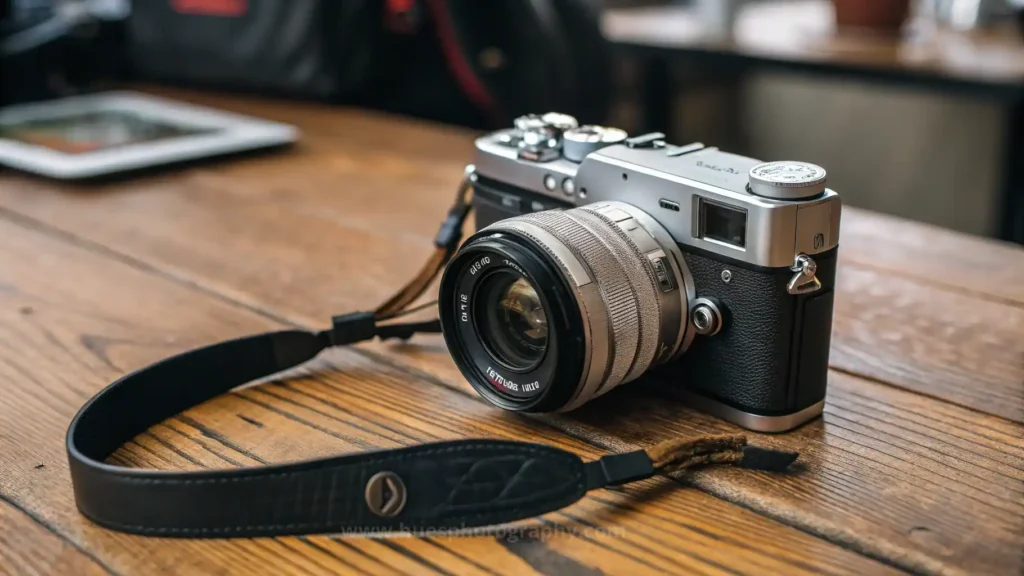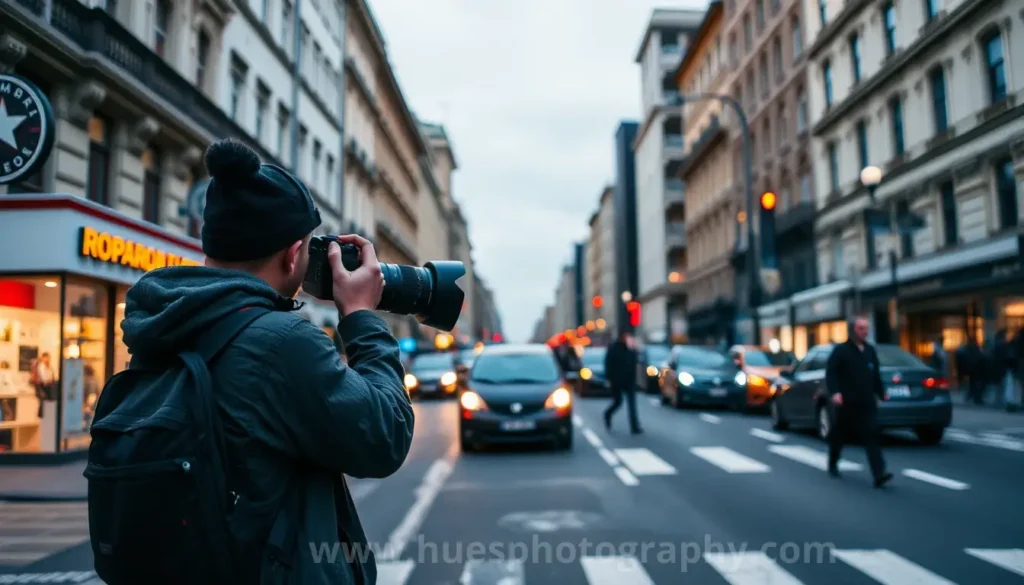Photography has come a long way from the days of bulky film cameras. Today, mirrorless cameras are revolutionizing how we capture moments. Whether a beginner or a seasoned professional, mirrorless photography offers an exciting alternative to traditional DSLR setups, providing incredible flexibility and performance in a more compact body.
What is Mirrorless Photography?
As the name suggests, a mirrorless camera doesn’t rely on the mirror mechanism found in DSLRs. Instead, light passes directly through the lens onto the digital sensor, providing a real-time digital display on either an electronic viewfinder (EVF) or the camera’s screen. This elimination of the mirror allows for a more compact and lightweight design, making these cameras a favorite among travelers and content creators.
A Brief History of Mirrorless Cameras
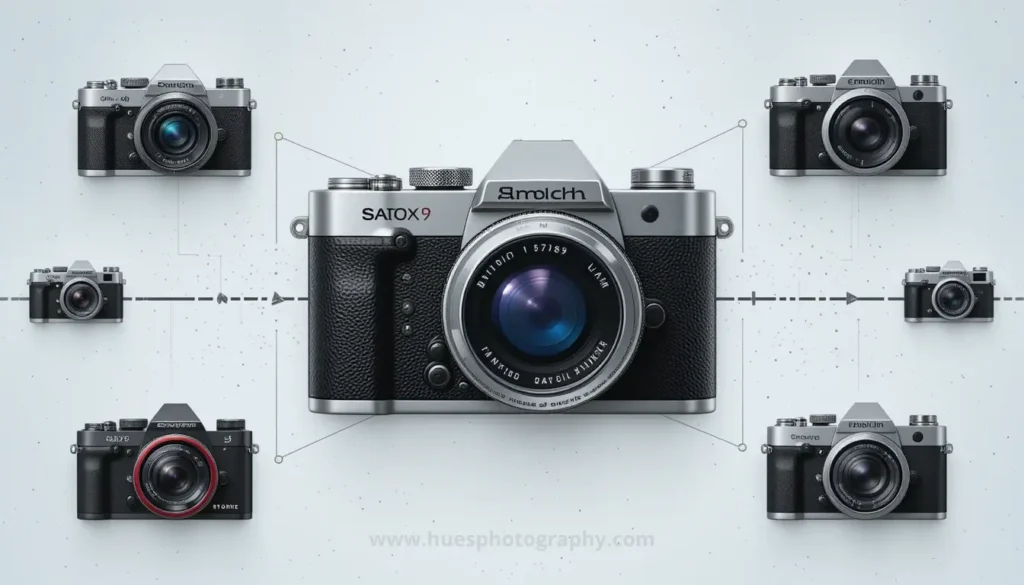
The concept of mirrorless cameras gained traction in the mid-2000s, with Panasonic and Olympus spearheading the Micro Four Thirds system. Since then, mirrorless technology has rapidly evolved, with Sony, Canon, Nikon, and Fujifilm introducing high-performance models that compete head-to-head with traditional DSLRs.
How Mirrorless Cameras Work
Mirrorless cameras work by sending light from the lens directly onto the image sensor, which then translates that into an electronic image. This system contrasts sharply with DSLRs, which rely on a mirror to reflect light into an optical viewfinder. The absence of this mechanical mirror gives mirrorless cameras their defining advantage.
Key Components of a Mirrorless Camera
The core components of a mirrorless camera include:
- Electronic Viewfinder (EVF) or LCD: Displays a live preview of the shot.
- Image Sensor: Responsible for capturing the image.
- Lens Mount: The connection point that links the lens to the camera body.
- Shutter Mechanism: Controls the exposure time.
Differences Between Mirrorless and DSLR Cameras

The main difference between a DSLR and a mirrorless camera is the absence of the mirror mechanism. DSLRs use an optical viewfinder, while mirrorless cameras provide an electronic viewfinder (EVF) or live view display. This difference leads to various performance distinctions, such as size, weight, autofocus capabilities, and video features.
Advantages of Mirrorless Photography
Compact Size and Portability
A major advantage of mirrorless cameras is their compact size. Because they lack a bulky mirror and optical viewfinder system, these cameras can be significantly smaller and lighter than their DSLR counterparts. This makes them ideal for street photography, travel, and on-the-go shooting.
Faster Autofocus and Shutter Speed
Many mirrorless cameras boast faster autofocus systems, particularly with newer models using hybrid AF systems. The combination of contrast detection and phase detection autofocus ensures quicker and more accurate focus, which is crucial for fast-paced photography such as sports or wildlife.
Superior Video Capabilities
Videographers often favor mirrorless cameras due to their advanced video features. Many models offer 4K video, high frame rates, and continuous autofocus during video capture. Additionally, because the camera lacks a mirror, you can record videos using the EVF, ensuring better stability and composition.
Silent Shooting: A Game Changer for Discreet Photography
Another unique feature of mirrorless cameras is their silent shutter. You can shoot discreetly without the clunking noise of a mirror flipping up. This is particularly useful for capturing candid moments in events such as weddings or street photography, where a loud shutter might ruin the moment.
Potential Drawbacks of Mirrorless Cameras
Battery Life Considerations
One downside to mirrorless cameras is their battery life. Because they rely heavily on electronic components like the EVF and screen, mirrorless cameras tend to use up more battery power than DSLRs. Carrying extra batteries is often a must for longer shoots.
Limited Lens Availability (Compared to DSLR)
While mirrorless systems are gaining popularity, they still don’t match the vast selection of lenses available for DSLRs, particularly when it comes to more specialized options. Yet, this gap is quickly narrowing as manufacturers keep expanding their mirrorless lens collections.
Price Point for Professional-Grade Models
Mirrorless cameras range in price, but professional-grade models can be costly, often matching or exceeding the price of high-end DSLRs. This is an important consideration for photographers looking to upgrade their equipment.
Choosing the Right Mirrorless Camera
Factors to Consider Based on Photography Needs
When choosing a mirrorless camera, it’s essential to consider your specific photography needs. Are you into portraits, landscapes, or action shots? Different models cater to different niches, with some excelling in low-light performance and others providing superior burst rates.
Comparing Full-Frame vs. APS-C vs. Micro Four-Thirds Sensors
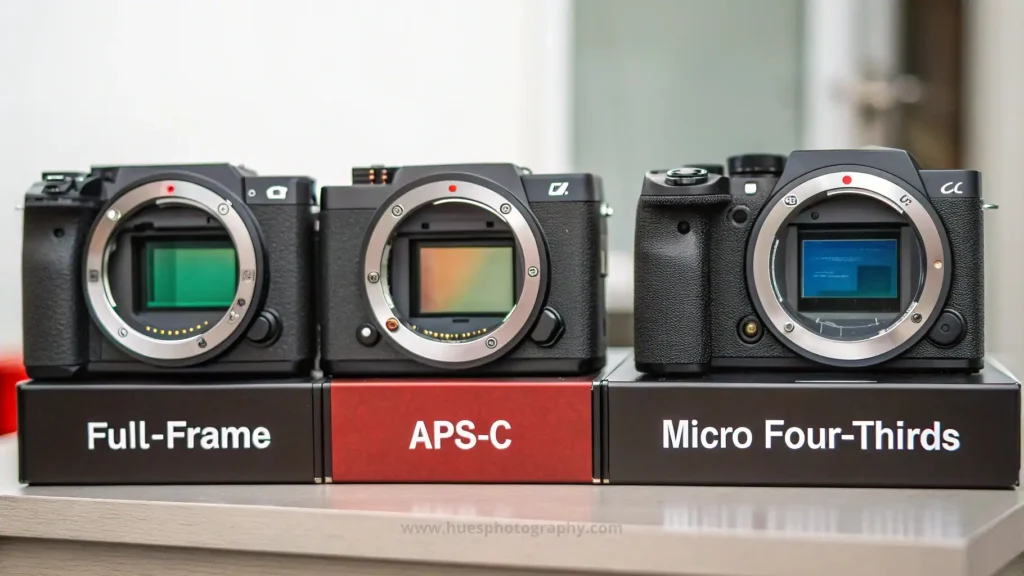
The size of the sensor plays a significant role in determining image quality.
- Full-frame sensors offer the best image quality and low-light performance, ideal for professionals.
- APS-C sensors strike a balance between performance and portability, great for hobbyists.
- Micro Four Thirds sensors are smaller but allow for highly compact systems, perfect for travel and video.
Top Mirrorless Camera Brands and Models
Popular brands like Sony (Alpha series), Canon (EOS R), Nikon (Z series), and FujiFilm (X-T series) all offer a range of options for both beginners and professionals. Each brand has its strengths, whether it’s Sony’s autofocus prowess or FujiFilm’s retro design and tactile controls.
Essential Lenses for Mirrorless Photography
Mirrorless cameras are known for their versatility, and choosing the right lenses is crucial for capturing stunning photos across different genres of photography. While the number of available lenses for mirrorless systems is growing, it’s important to understand the types of lenses that will help you maximize your camera’s potential.
Prime Lenses vs. Zoom Lenses
Prime Lenses
Prime lenses feature a fixed focal length, meaning they lack zoom capability. Although this limits flexibility, prime lenses offer some key advantages, including:
- Wider Aperture: Many prime lenses have larger apertures (f/1.4, f/1.8), which allows for better low-light performance and shallower depth of field. This is ideal for portrait photography and bokeh effects.
- Sharper Images: With fewer moving parts, prime lenses often deliver sharper image quality compared to zoom lenses.
Popular prime lenses for mirrorless cameras include:
- 50mm f/1.8 (the “nifty fifty”): Great for portraits, street photography, and everyday use.
- 35mm f/1.4 or f/1.8: Perfect for environmental portraits and wider shots.
- 85mm f/1.4 or f/1.8: Excellent for tighter portraits and achieving beautiful background blur.
Zoom Lenses
Zoom lenses offer variable focal lengths, allowing you to capture a wide range of compositions without switching lenses. They’re ideal for travel, events, and situations where you need to adjust framing quickly.
Common zoom lenses for mirrorless cameras include:
- 24-70mm f/2.8: A versatile lens for everything from landscapes to portraits, making it a popular “walkaround” lens.
- 70-200mm f/2.8: Great for sports, wildlife, or any situation where you need to capture subjects at a distance.
- 16-35mm f/4: This wide-angle zoom is perfect for landscape photography, architecture, and even astrophotography.
Best Lens Options for Portrait Photography
When it comes to portrait photography, mirrorless systems offer a variety of lenses to create stunning, professional-looking results.
50mm f/1.8 (or f/1.4)
The 50mm focal length is a popular choice among portrait photographers. The wide aperture allows for beautiful background blur (bokeh) and works well in low-light situations. It also provides a natural perspective without distortion, which is flattering for portraits. The Sony FE 50mm f/1.8 or Canon RF 50mm f/1.2 are popular choices in this range.
85mm f/1.4 (or f/1.8)
An 85mm lens offers a slightly longer focal length, which compresses the background and creates a more intimate portrait. The wide aperture on lenses like the Nikon Z 85mm f/1.8 or FujiFilm XF 56mm f/1.2 results in stunning subject isolation and a creamy, out-of-focus background, ideal for professional headshots or weddings.
35mm f/1.4 (or f/1.8)
For environmental portraits or street photography, a 35mm lens is a great choice. It allows you to capture more of the surroundings while keeping your subject sharp. The Sigma 35mm f/1.4 DG DN Art for Sony E-mount is an excellent lens in this category.
Best Lens Options for Landscape Photography
Landscape photography typically requires lenses that offer wide angles to capture sweeping vistas, mountains, oceans, or cityscapes.
16-35mm f/4
A 16-35mm lens is one of the best options for landscape photography due to its ultra-wide field of view. The Sony FE 16-35mm f/4 and Canon RF 15-35mm f/2.8L are excellent choices for capturing wide expanses while maintaining sharpness throughout the image. These lenses also work well for architectural photography, where you need to fit a large subject into the frame.
24-70mm f/2.8
The 24-70mm is a versatile zoom lens that covers wide angles at 24mm and mid-range focal lengths up to 70mm. This makes it perfect for landscapes that include both wide shots and more focused compositions. The Sony FE 24-70mm f/2.8 GM is a highly regarded option in this range.
14mm f/2.8 Ultra-Wide Prime
For the ultimate wide-angle experience, especially in astrophotography, an ultra-wide 14mm prime lens can capture vast scenes with a lot of detail. The Rokinon/Samyang 14mm f/2.8 for Sony E-mount and Canon RF-mount are popular among landscape and night sky photographers for their sharpness and wide field of view.
Best Lens Options for Street Photography
Street photography often benefits from compact, fast, and versatile lenses that allow you to move quickly and capture candid moments.
35mm f/1.8
A 35mm lens is a street photography staple. It gives you a wide enough angle to capture context, but it’s also tight enough to focus on subjects without distortion. The Sony 35mm f/1.8 and Fujifilm XF 35mm f/1.4 are top picks for street photographers looking for speed and discretion.
28mm f/2
A 28mm f/2 lens offers a slightly wider field of view, making it ideal for street scenes where you want to capture more of the environment. The Canon RF 28mm f/2.8 STM is a great choice for street photography with a lightweight and compact design.
24mm f/1.4
For photographers looking for even wider shots, a 24mm lens offers dynamic perspectives, making it great for both street and travel photography. The Sony FE 24mm f/1.4 GM is a standout for its sharpness and low-light capabilities.
Best Lens Options for Wildlife and Sports Photography
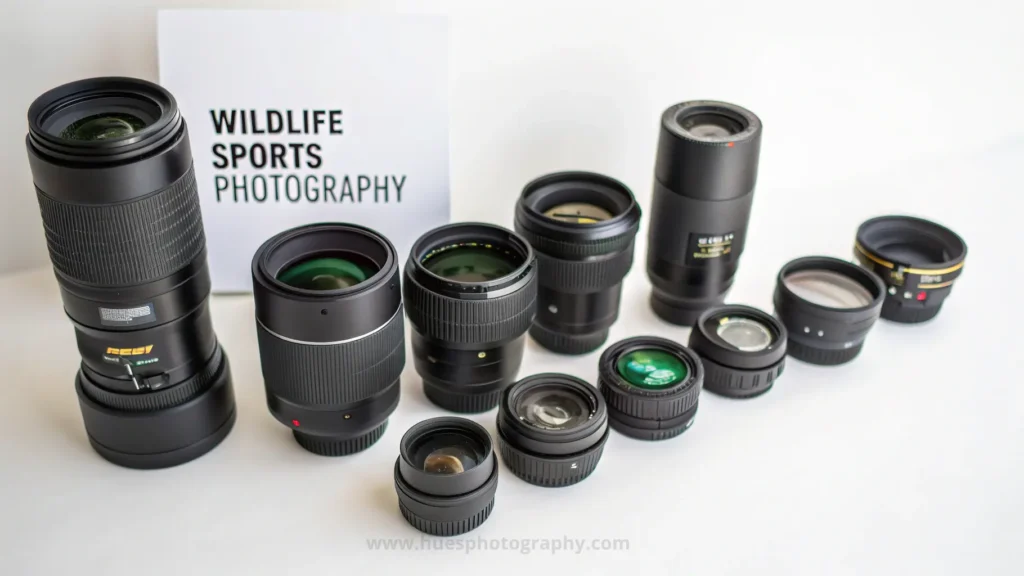
Photographing wildlife or fast-paced sports events requires lenses with longer focal lengths to capture distant subjects without disturbing them.
70-200mm f/2.8
A 70-200mm f/2.8 lens is one of the most popular choices for sports and wildlife photography. It offers a great range to capture distant subjects while maintaining image sharpness and allowing for fast autofocus. The Sony FE 70-200mm f/2.8 GM OSS is widely regarded as one of the best in its class.
100-400mm f/4.5-5.6
For those who need more reach, a 100-400mm lens is ideal for wildlife photography, especially when your subjects are far away, like birds or animals on a safari. The Canon RF 100-500mm f/4.5-7.1L IS USM is perfect for getting close-up shots of wildlife without disturbing their natural behavior.
200-600mm f/5.6-6.3
A super-telephoto zoom lens like the Sony FE 200-600mm f/5.6-6.3 G OSS offers incredible reach for shooting wildlife or action at extreme distances. While large and somewhat heavy, it’s indispensable for capturing detailed shots of animals or fast-moving sports from a distance.
Macro Lenses for Close-Up Photography
For photographers interested in capturing small details like flowers, insects, or intricate textures, macro lenses offer incredible magnification and detail.
90mm f/2.8 Macro
A 90mm macro lens is perfect for close-up shots with stunning detail and sharpness. The Sony FE 90mm f/2.8 Macro G OSS is a top choice for those interested in macro photography, offering 1:1 magnification for true macro shots.
100mm f/2.8 Macro
The Canon RF 100mm f/2.8L Macro IS USM is another excellent option for macro enthusiasts, providing image stabilization and razor-sharp detail for close-up subjects. Its longer focal length also makes it ideal for portrait work.
Telephoto Lenses for Event and Concert Photography
If you’re covering events or concerts, you’ll often need a telephoto lens to get close to the action without physically being near your subject.
135mm f/1.8
A 135mm prime lens is perfect for getting close shots in low-light situations, such as concerts or theater performances. The Sony FE 135mm f/1.8 GM is a highly regarded lens for its stunning sharpness and low-light capability.
Accessories to Enhance Your Mirrorless Photography
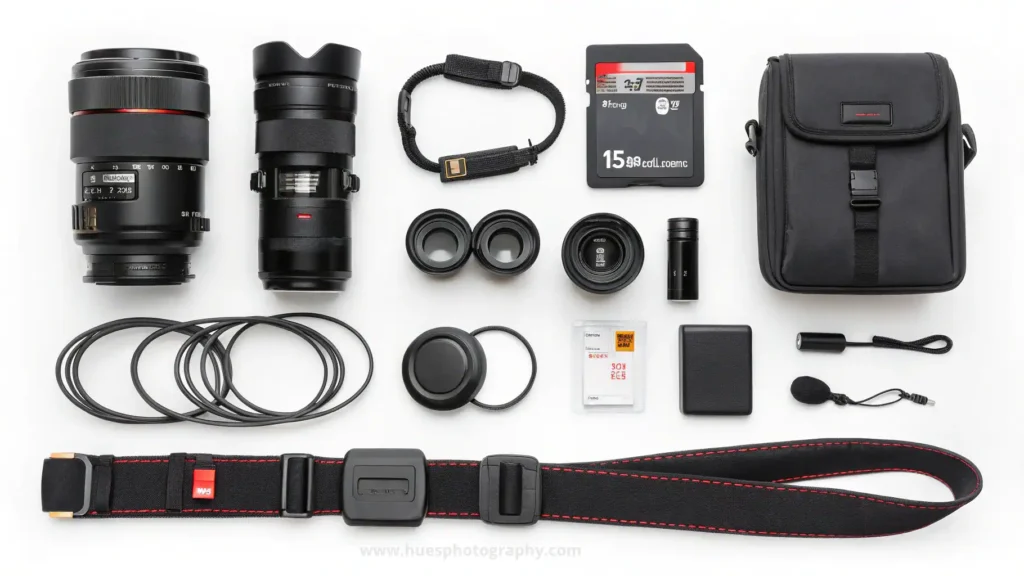
Tripods and Stabilizers
Tripods are essential for long-exposure shots, while gimbal stabilizers are a must for smooth video recording.
External Flashes and Lighting Kits
Though mirrorless cameras perform well in low-light situations, external lighting can help you achieve more controlled results, especially for portrait or studio photography.
Camera Straps and Cases for Protection and Convenience
To keep your mirrorless gear safe and easy to carry, investing in a durable camera strap and protective case is a smart move. Brands like Peak Design offer highly versatile options.
Tips for Getting the Best Shots with Mirrorless Cameras
Mastering Manual Mode
Learning how to control shutter speed, ISO, and aperture in manual mode will unlock the full potential of your mirrorless camera.
Utilizing Focus Peaking for Sharp Images
Focus peaking highlights in-focus areas, making it easier to achieve precise manual focus, especially in macro or portrait photography.
How to Use the EVF for Better Framing
The electronic viewfinder (EVF) is a powerful tool for framing your shots. It offers a real-time preview, allowing you to adjust settings like exposure and white balance before you capture the image.
Mirrorless Photography for Video Content Creators
Why Mirrorless is Ideal for Videography
Mirrorless cameras have become the go-to choice for video content creators. The combination of lightweight design, superior autofocus, and 4K video recording makes them a top choice for vloggers, filmmakers, and YouTubers.
Tips for Shooting High-Quality Videos
Ensure you shoot at the correct frame rate (24fps for cinematic feel, 60fps for smooth motion). Using external microphones also improves audio quality, crucial for professional-looking content.
Best Video Settings for 4K and Beyond
To maximize video quality, set your mirrorless camera to the highest resolution available, usually 4 K. For smoother footage, try using a gimbal stabilizer or tripod.
The Future of Mirrorless Photography
Growing Popularity and Technological Advancements
The rapid rise in mirrorless camera technology is showing no signs of slowing. With constant advancements in autofocus, video capabilities, and sensor technology, mirrorless cameras are likely to become the new standard.
Will Mirrorless Cameras Overtake DSLRs Entirely?
While DSLRs remain popular among certain professionals, mirrorless cameras are quickly taking over the market. With innovations continuously improving performance, many experts predict that mirrorless systems will eventually dominate the photography world.
Conclusion
Mirrorless photography offers a powerful and versatile tool for capturing high-quality images and videos. With a wide range of models, lenses, and accessories, there’s something for every photographer, from casual hobbyists to seasoned professionals. As technology evolves, mirrorless cameras continue to push the boundaries of what’s possible in modern photography.
FAQs
1. Is mirrorless better than DSLR?
- It depends on your needs. Mirrorless cameras offer more advanced autofocus and video capabilities, while DSLRs often provide better battery life and a wider lens selection.
2. Are mirrorless cameras good for beginners?
- Yes! Mirrorless cameras are easy to use, and their real-time viewfinder can help beginners understand how changes in settings affect their shots.
3. How long do mirrorless cameras last?
- With proper care, a mirrorless camera can last for years. Shutter life expectancy is generally around 100,000-200,000 actuations, but this varies by model.
4. What is the best mirrorless camera for vlogging?
- Popular choices for vlogging include the Sony ZV-E10 and Canon EOS R50 due to their compact design, excellent autofocus, and 4K video recording capabilities.
5. Do professional photographers use mirrorless cameras?
- Absolutely. Many professionals have made the switch to mirrorless due to the advantages in size, autofocus, and video performance.
6. How do mirrorless cameras perform in low light?
- Mirrorless cameras perform exceptionally well in low-light conditions, especially models with full-frame sensors. Features like in-body image stabilization (IBIS) and high ISO capabilities allow for clearer images even in dim environments.
7. Can you use DSLR lenses on a mirrorless camera?
- Yes, with the appropriate lens adapter, many DSLR lenses can be used on mirrorless cameras. However, you may lose some functionality, like autofocus speed, depending on the adapter and lens combination.
8. Are mirrorless cameras good for sports photography?
- Absolutely. Many mirrorless cameras offer fast burst shooting rates and excellent autofocus tracking, making them great for capturing fast action in sports and wildlife photography.
9. Do mirrorless cameras have a learning curve?
- Like any advanced camera system, mirrorless cameras may require a learning curve, especially for those unfamiliar with digital viewfinders or manual settings. However, many models have intuitive controls and beginner-friendly modes.
10. What is focus peaking in mirrorless cameras?
- Focus peaking is a feature in many mirrorless cameras that highlights the areas of the image that are in focus. It’s especially useful for manual focusing, making it easier to achieve sharpness in your shots.
